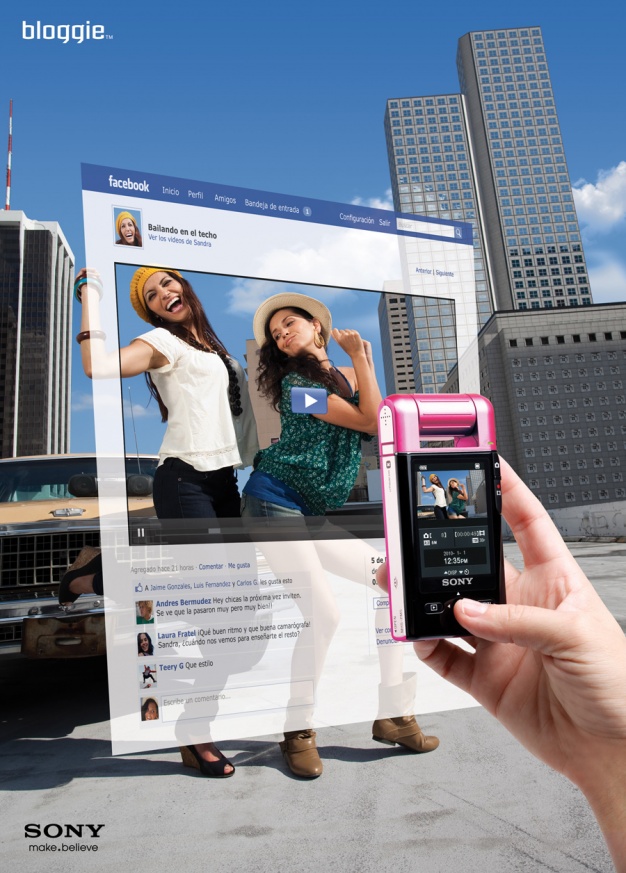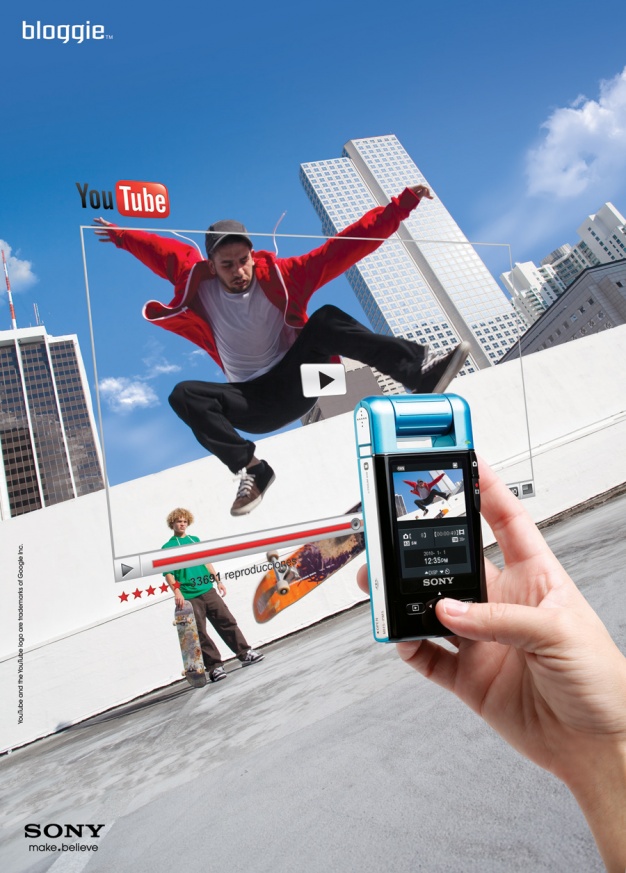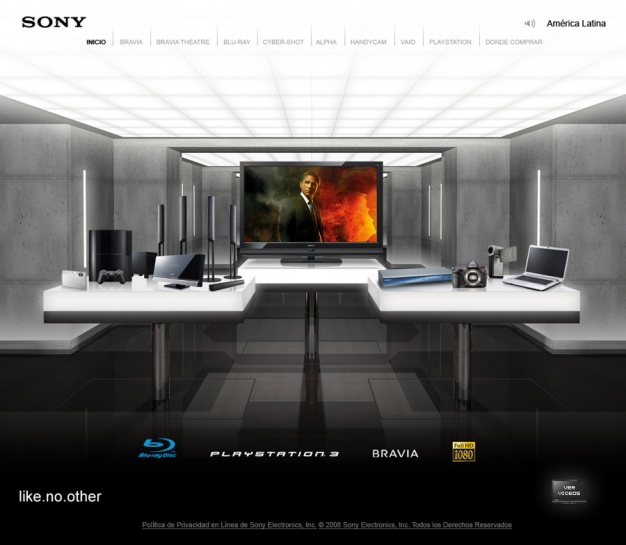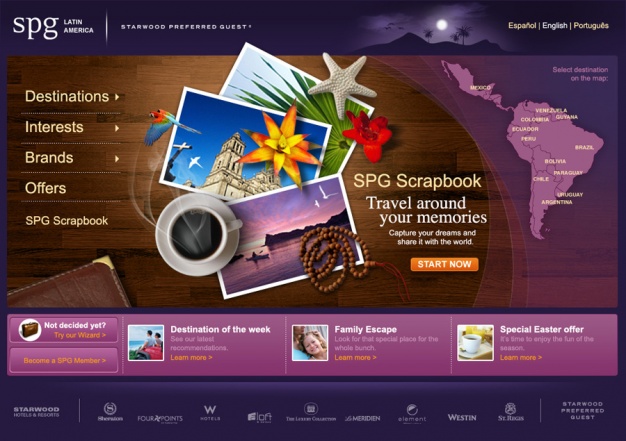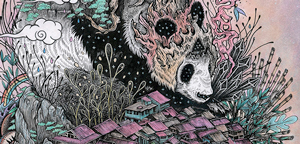Interview Julien Tauban : talented Art & Creative Director

We had the chance to ask some questions to Julien Tauban, talented French Art & Creative Director based in Miami. He talks about his career in the US, his work and the future of Web Design.
 Hi Julien. To start, can you briefly introduce yourself to our readers?
Hi Julien. To start, can you briefly introduce yourself to our readers?
My name is Julien Tauban. I was born and raised in Nantes, France; where I also studied Industrial and Interactive Design. I left France ten years ago and I’ve been living and working in sunny Miami since then. Presently, I serve as Creative Director in a Digital Marketing Agency.
Tell us more about your career focusing on key milestones.
I guess I have to start with a catalyst event, my 1996 internship at a Miami-based Interior and Product Design agency. Even though I was merely a student, I had the opportunity to design products that were eventually industrialized and sold to the public. It was also my first branding experience. Following my Master’s Degree in France, I launched my own studio offering services such as Product Design, Print, Graphic Design, Interactive Design, Interior Design, Packaging Design, and Branding amongst other. After six busy months, the demand for digital projects increased dramatically and that’s when I decided to make it my expertise. Shortly after I was offered a job in the US and for the past ten years I’ve been fortunate enough to collaborate with talented people that have given me the opportunity to freely express my creativity. I’ve also been able to grow progressively from Designer to Senior Designer to Art Director to Creative Director at amazing agencies including Latin3, Razorfish and Media 8. At Razorfish I was very fortunate to work under the direction of Michael Ferrare, former CPB Senior Art Director and, in my opinion, an advertising genius. Working for these agencies I managed to snag various awards including Webbys, WebAwards, Addys, Adobe Site of the Day, Cannes Cyber Lion (finalist), FIAP, HOW Interactive, ADTech and Mixx.
You left France to settle in the US. Are there a lot of cultural differences between both countries when it comes to visual trends and art in general?
There are obviously many differences between the two countries but when it comes to the methodology used in digital marketing and digital art, there are more similarities than differences.
My perception might be biased due to the fact that I left France a long time ago and I’m not fully aware of what’s going on there. It seems to me that on both sides of the Atlantic the visual trends tend to be the same. This could be easily explained by how simple it is nowadays for designers to instantly share their ideas and their work online with people from around the globe. The main difference would be any reference to pop culture, which is specific to a country and can’t be applied to another one.
You have a lot of experience both in the digital and print fields? Which one do you prefer? What are the major differences between the two?
Both fields are different particularly when it comes to the interaction with the end-user or reader. If they are part of a global campaign, they deliver the same message and hopefully the same reaction. Until not that long ago the more traditional fields like print and TV would drive the concept for the interactive component of the campaign but things have changed and now a global campaign can be fully executed taking the interactive concept as the foundation. So between print and digital, I honestly don’t have a preference as I always take the same approach and methodology regardless of the design field.
You have worked for a long list of prestigious clients such as Sony, Volkswagen and Mercedes Benz. Are you aiming higher?
I don’t necessarily aim higher in terms of client size or prestige but rather aim at achieving better quality. What’s really interesting and engaging for a designer is to work on various accounts for clients coming from different industries. It think one of the biggest satisfactions is to win a pitch against a bigger agency and seeing how your design made an impact on the client’s decision, whether it’s a small or huge brand.
What project has had the biggest impact on you?
My favorite project to date is an integrated campaign we did for the launch of the new Sony Bloggie. It was the first time I had the opportunity to create a global concept that was carried through all the components of the campaign including TV, digital, Facebook, YouTube, POP, store front, product brochure, sweepstakes, posters and magazine ads. This concept involved the endorsement of YouTube and Facebook, which made the approval process a really painful one but in the end it was totally worth it. When I heard that the folks at Sony Headquarters in Tokyo were asking for the campaign to use it worldwide, I knew we had done a great job. I would like to take this opportunity to thank Sony for the creative freedom they gave us during this campaign.
Brands are increasingly using social media networks (Twitter, Facebook, etc). Do you think that the design of these Facebook pages, YouTube channels and other social media applications requires a new specialization in the profession?
Some agencies are already specialized in the development of social media campaigns but I don’t think this should be considered a completely separate field away from digital. It’s been over a year now that most of clients demand social media components in their campaigns, mainly Facebook applications, YouTube channels and Twitter accounts. Brands, whether big or small, have come to understand that social media tools can’t be overlooked and that they allow valuable one-to-one interaction with their consumers. Regarding the skills required to develop such apps or interfaces, I think any designer has the ability to do it if he simply follows the framework guidelines of the specific platform.
Will Flash disappear as some say?
That’s a tricky one! Something tells me that HTML5 wouldn’t be making so much noise if it didn’t have the potential to become the next industry standard. Just by looking at the latest experiments from developers like Mr Doob you can clearly see this is going to be huge. On the other hand, it might be too drastic to ask our developers to learn a completely new language when there’s already a standard in place. I’ve recently heard that Adobe came up with a riposte by creating a conversion tool from native Flash to HTML5. Time will tell if Steve was right. Since I have to make a choice I will say no. I believe Flash will not disappear or at least is not ready to surrender yet.
You have a one-page portfolio? What are the pros of using such a layout compared to portfolios displaying each project separately?
I should actually rename it the 2-page portfolio since I split the site in two sections: Interactive and Print. The reason why I chose this layout is simple; I wanted to give users the easiest navigation possible and give each project the maximum real estate. You can browse the projects without clicking, just by scrolling down the page. I must admit that after a couple of years of adding projects the layout doesn’t work anymore and a grid type layout would probably be a better choice. That’s the reason why I duplicated my portfolio on the Behance network that offers quality template-based portfolios for free.
What piece of advice would you like to give young designers and design students?
Invest yourselves in the design community, read specialized blogs, try to be as active and productive as possible, learn new tricks everyday, experiment things and don’t be afraid to promote yourself. Talent and passion are obviously important but I think the amount of hours spent delving into your field is a key factor for mastering any art.
Are you planning on moving back to France in the future?
I’m not planning on moving back to France or moving anywhere else anytime soon or at least as long as I keep getting better opportunities here in the US.
Where do you find inspiration?
I find inspiration in award winning campaigns (Cannes, Clio, One Show, FWA, Webby, etc.), in other agencies, friends, digital artists, social network groups, art collectives and Fashion and Design blogs.
Thank you for your time.
Thanks for this great opportunity. Please keep inspiring us everyday.
You guys rock!
Cheers
Julien
Discover the portfolio of Julien Tauban, his Behance, and follow him on Twitter.

